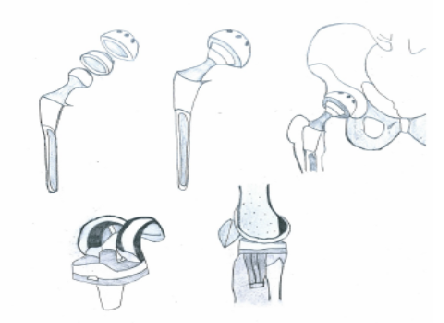


Indian Journal of Science and Technology
DOI: 10.17485/IJST/v16i30.george
Year: 2023, Volume: 16, Issue: 30, Pages: 2311-2316
Original Article
Mariya George1, Sangeetha V Naveen2, M R Murali2, S S Murugan3, T S Kumaravel4, T N Sathya2*
1Research Scholar, Toxicology, GLR Laboratories Private Limited, India
2Scientist, Toxicology, GLR Laboratories Private Limited, India
3Managing Director and Principal Scientist - Toxicology, GLR Laboratories, India
4Chairman, Head of the Department, Toxicology, GLR Laboratories Private Limited, India
*Corresponding Author
Email: [email protected]
Received Date:18 November 2022, Accepted Date:04 August 2023, Published Date:08 August 2023
Background/Objectives: Orthopaedic implants are intended to be part of a biological system for a considerable amount of time, hence its essential to test for their genotoxicity. This review investigates the genotoxicity associated with various orthopaedic implant materials. Methods: We collected genotoxicity studies conducted on twenty different types of orthopedic implant materials in our laboratory from 2015 to 2022, along with their accompanying reports. Based on these reports, the implants were categorized into groups according to their materials of construction. This paper includes a thorough evaluation of the findings from the genotoxicity tests obtained from the Bacterial Reverse Mutation Assay, Chromosomal Aberration Assay, and Micronucleus Assay conducted on orthopedic implant materials in our laboratory. Findings: A total of 20 different orthopedic implants were tested in our laboratory for their genotoxic potential. These 20 implants were made of four different materials viz., titanium alloys, ultra-high molecular weight polyethylene, stainless steel and Cobalt chromium molybdenum alloys. All these implants were tested on Ames test, chromosome aberration test and or in vivo micronucleus tests. None of the materials showed any evidence of mutagenicity. Novelty: This is the first open paper highlighting the results of genotoxicity testing of selected orthopedic implant materials.
Keywords: Orthopaedic Implants; Genotoxicity; Chromosomal Aberration; Ames; Micronucleus Assay
© 2023 George et al. This is an open-access article distributed under the terms of the Creative Commons Attribution License, which permits unrestricted use, distribution, and reproduction in any medium, provided the original author and source are credited. Published By Indian Society for Education and Environment (iSee)
Subscribe now for latest articles and news.